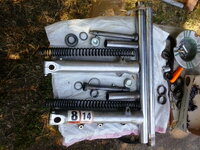Larry Fine
Moderator
Oh, well, state inspection time, and correctly told I need to rebuild my front forks. The labor at my local Honda service department was around $260, plus about half of that in parts. So . . .
I went parts shopping, and ordered new fork and dust seals, a set of new bushings with other internal parts, a pair of front wheel seals, and a set of new ceramic brake pads while at it.
I'm trying to decide whether to stick with the recommended 10-weight fork oil, or try 15-weight oil, thinking that clearances and orifices are greater than when the parts were new.
So, until the parts trickle in so I can reassemble it, here are a few pics, including how to hold up the front of a bike (unless you need to pull the gold van out of the driveway):
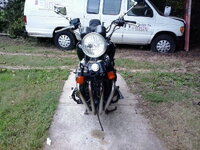

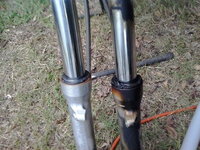
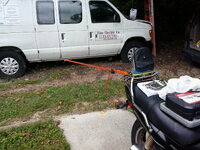

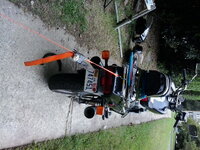
I went parts shopping, and ordered new fork and dust seals, a set of new bushings with other internal parts, a pair of front wheel seals, and a set of new ceramic brake pads while at it.
I'm trying to decide whether to stick with the recommended 10-weight fork oil, or try 15-weight oil, thinking that clearances and orifices are greater than when the parts were new.
So, until the parts trickle in so I can reassemble it, here are a few pics, including how to hold up the front of a bike (unless you need to pull the gold van out of the driveway):







